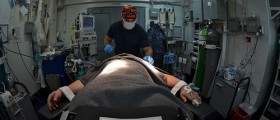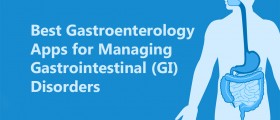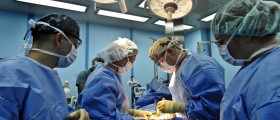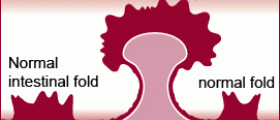
Gastrointestinal endoscopy is a set of procedures all of which provide with insight of the inside of different gastrointestinal organs. The very procedure include insertion of an endoscope, a flexible fiberoptic tube containing a tiny camera at one end. The camera is connected with an eyepiece and allows direct visualization or the inside of the organ. It is also possible to display the inner surface of the organ on a video screen.
Gastrointestinal endoscopy is a very powerful tool for both diagnosing different medical conditions and treatment of certain diseases. It can be performed on an outpatient or inpatient basis and rarely leads to complications.
Gastrointestinal endoscopy includes several procedures depending on the examined part of the digestive tract. So, esophagogastroscopy includes inspection of the esophagus and the stomach, colonoscopy includes inspection of the colon while enteroscopy includes insertion of an endoscope in the small intestine.Purpose of Gastrointestinal Endoscopy
Direct visualization of the gastrointestinal tract is of major importance for diagnosing many medical conditions. The procedure also allows emergency interventions some of which are life-saving.
For instance, gastrointestinal endoscopy detects and may stoop massive upper GI bleeding, may confirm perforation of organs of the GI tract or confirm the presence of inflammatory bowel diseases. It is also good for identification of source of bleeding which leads to bloody/tarry stools. Sudden colon inflammation, acute diverticulitis and many more conditions can be easily conformed with the assistance of gastrointestinal endoscopy.Preparation for Gastrointestinal Endoscopy
As far as upper endoscopy is concerned, it is essential to report all the medications one is currently taking, allergies to drugs and other allergens and medical conditions one is currently suffering from. Previous surgeries should be reported as well. Patients must sign a consent form prior the procedure. They are also advised to wear clothing that can be easily removed and are due to remove dentures, eyeglasses and all such items that may interfere in the very procedure.
Prior EGD or esophagogastroduodenoscopy patients must discontinue taking Aspirin and sucralfate. People with a history of cardiac valve replacement as well as those with blood vessel grafts must be prophylactically administered antibiotics. They should not eat or drink anything 8-10 hours prior the procedure.
Finally, prior colonoscopy and sigmoidoscopy the rectum and colon must be cleaned of all fecal masses. This is achieved with dietary changes. Foods containing fiber and small seeds must not be consumed 5-6 day before the procedure and one can drink fluids such as tea and fruit juices. Complete elimination of feces is additionally achieved with laxatives. These are administered 12-15 hours before the test. Finally, patients may additionally need 1-2 little enemas.

















Your thoughts on this
Loading...